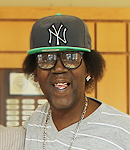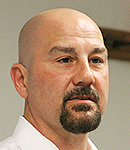Since 1976, nine men have been exonerated from Ohio’s death row.

The number of exonerations is based on a rigorous three-prong test adopted by the nation’s leading source for information on the death penalty, the Death Penalty Information Center. The criterion prescribes defendants must have been convicted, sentenced to death and subsequently either:
a. Been acquitted of all charges related to the crime that placed them on death row, or;
b. Had all charges related to the crime that placed them on death row dismissed by the prosecution, or;
c. Been granted a complete pardon based on evidence of innocence.
Some of the recommendations from the Joint Task Force to Review the Administration of Ohio’s Death Penalty aim to address the problem of wrongful conviction. Important measures like bringing all state run crime labs to full accreditation ensure that the evidence presented at trial is examined properly, diminishing (but not removing) the chance tainted evidence would influence a wrongful conviction.
The nine men exonerated from Ohio’s death row spent a combined 190 years incarcerated for crimes they did not commit. On average, Ohio death row exonerees spent over 21 years imprisoned before being freed.
The nine men who have been exonerated from Ohio’s death row since 1976:
 |
Gary BeemanGary Beeman was sentenced to death in 1976. His conviction was based on the perjured testimony of a prison escapee that Beeman’s lawyers were prevented from fully cross-examining. At his retrial, five witnesses testified that this star witness was, in fact, the killer and that Beeman was not involved. He was acquitted in 1979. |
 |
Dale JohnstonDale Johnston was sentenced to death in 1984 for the murders of his stepdaughter and her boyfriend. After undergoing hypnosis, a sole eyewitness identified Johnston as the killer. The only other primary witness provided boot print evidence that was later discredited. The authorities knew of four other eyewitnesses with a completely different story of the crime, but they never disclosed them to the defense. Johnston was released in 1990. |
 |
Timothy Howard and Gary Lamar JamesTimothy Howard and Gary Lamar James were convicted of a murder during the course of a bank robbery in 1976. They were released after new evidenced was uncovered that had not been disclosed at the time of their trials, including conflicting witness statements and fingerprints. Their charges were dismissed in 2003. (Photos: Phil Long/AP Photo) |
 |
Derrick JamisonDerrick Jamison was sentenced to death in 1985 for the murder of a Cincinnati bartender. Prosecutors withheld critical evidence that would have pointed to Jamison’s innocence, including eyewitness descriptions and statements that contradicted the story told by Jamison’s co-defendant. Jamison’s charges were dismissed in 2005, twenty years after he was sent to death row. |
 |
Joe D’AmbrosioJoe D’Ambrosio was sentenced to death in 1989 for murder of Anthony Klann. The federal district court overturned his conviction because the state had withheld evidence from the defense that pointed to his innocence. The court then barred his re-conviction trial due to further prosecutorial misconduct. D’Ambrosio’s charges were dismissed in 2012, twenty-three years after he was sentenced to death row. |
 |
Ricky Jackson, Wiley Bridgeman, and Kwame AjamuRicky, Wiley, and Kwame were sentenced to death for the 1975 murder of a money-order salesmen in Cleveland. The state’s case rested on the witness testimony of a 12-year old who identified the three men as the perpetrators of the crime. In 2014, the witness recanted his testimony and admitted to being pressured by law enforcement to make the false identification. The men spent a combined total of nearly 90 years in prison and would likely have been executed in the 1970s had the U.S. Supreme Court not ruled the death penalty unconstitutional. (Photo credit: AP Photo) |
Want to take action now? Click here to download a sample letter regarding Innocence that you can send your representative/senator!
Who’s my representative/senator?
⬅ Back to Issues
